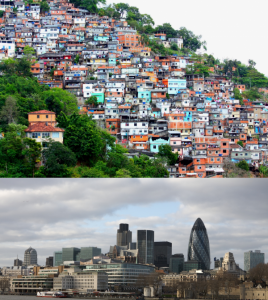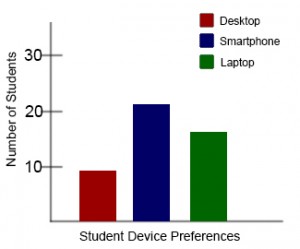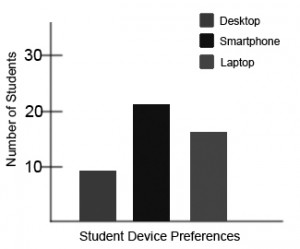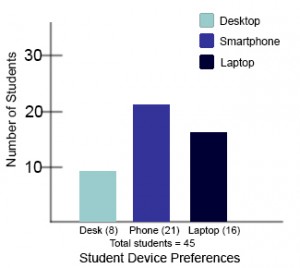Accessibility Toolkit – Making Your Open Textbook Accessible
Images
In this section, we provide recommendations to guide your inclusion of accessible, image-based content.
What Are Images?
Images include: photographs, diagrams, pictures, charts, graphs, maps
File types: .gif, .jpg, .png
Before You Begin
Why Are You Including the Images You Have Selected?
Before you can determine what you need to do to make an image accessible, you first need to identify its purpose or value to your textbook. Consider the following questions:
1. Does your image serve a functional purpose? In other words, is it conveying non-textual content to students? If so, you should:
- Provide a text alternative that serves the equivalent purpose of the non-text material[1]
- Not use colour as the only visual means of conveying information[2]
2. Does your image serve more of a decorative purpose? In other words, is it primarily a design element that does not convey content? If so, you should:
- Avoid unnecessary text descriptions
Who Are You Doing This For?
This work supports students who:
- Are blind or have low vision
- Have poor contrast vision
- Are colour blind and cannot differentiate between certain colours
- Are using a device with monochrome display
- Have a form of cognitive disability
What Do You Need To Do?
Functional Images and Alternative Text Descriptions
Consider what your content would look like if the images didn’t load. Now try writing alternative text for each image that serve as a replacement and provide the same information as the image.
As you work on developing your alternative text descriptions, keep the following recommendations and guidelines in mind:
- Alternative text must convey the content and functionality of an image and is rarely a literal description of the image (e.g., “photo of cat”). Rather than describing what the image looks like, alternative text should convey the content of the image and its purpose.[3]
- For relatively simple images (e.g., photographs, illustrations), try to keep your text descriptions short. You should aim to create a brief alternative (one or two short sentences) that is an accurate and concise equivalent to the information in the image.
- For more complex images (e.g., detailed charts, graphs, maps), you will need to provide more than a one- to two-sentence description to ensure all users will benefit from the content or context you intended to provide. In these cases, you can either provide the details in the text surrounding the image or provide a link to a longer text description on a separate page. You should still include a short text description (one to two sentences) that gives the image a meaningful name and tells students how to access the longer description.
- Leave out any unnecessary information. For example, you do not need to include information like “image of…” or “photo of…”; assistive technologies will automatically identify the material as an image, so including that detail in your alternative description is superfluous.
- Avoid redundancy of content in your alternative description. Don’t repeat the same information that already appears in text adjacent to the image.
Example (from Introduction to Sociology):

This photograph could be described in this way:
Figure 20.11 includes two photos. The first photo shows crowded buildings located on the hillside. They are small and shabby. The second photo shows magnificent buildings located by water.
Using Colour
Consider what your images would look like if they only displayed in black and white. Would any necessary context or content be lost if the colour was “turned off”? Images should not rely on colour to convey information; if the point you are making depends on colour to be understood, you may need to edit your image or formatting so that concepts presented are not lost to those who are colour blind or who require high contrast between colours.

Example 1 — not accessible:
In this basic bar chart, colour is the only means by which information is conveyed.

Example 2 — not accessible:
For a student who is colour blind or who has poor contrast vision, all of the relevant information is lost in a colour chart.
Example 3 — accessible:
Students who are colour blind can distinguish between high-contrast shades. In this example, contextual labels have been added to each bar at the bottom of the chart. Note that the chart will still require an alternative text description.

Decorative Images
If your image does not add meaning and is included for decorative or design purposes only, the space for the alternative text description should still be included with your image, but it should be left empty or blank. Assistive technologies will detect the image, and by leaving the alternative text description blank, you will signal to the student that there isn’t any contextual content embedded. Including alternative text descriptions for decorative images “simply slows the process down with no benefit because the screen-reading software vocalizes the content of the [alternative text description], whether that alternative text adds value or not.”[4]
- Web Content Accessibility Guidelines (WCAG) 2.0, Guideline 1.1 Text Alternatives. Accessed from: http://www.w3.org/TR/WCAG20/#text-equiv ↵
- Web Content Accessibility Guidelines (WCAG) 2.0, Guideline 1.4.1 Use of Color. Accessed from: http://www.w3.org/TR/WCAG20/#visual-audio-contrast ↵
- WebAIM (2014). Alt text blunders. Accessed from: http://webaim.org/articles/gonewild/#alttext ↵
- webAccess (2012). Adapted from: Top Ten Tips for making your website accessible. Accessed from: http://webaccess.berkeley.edu/developer-information/top-ten-tips/#alt ↵

